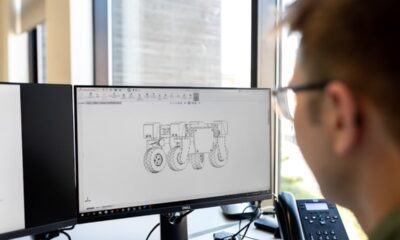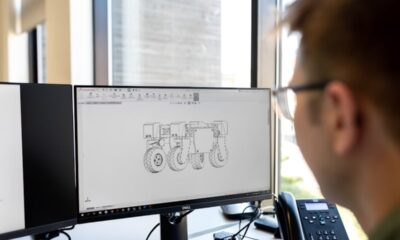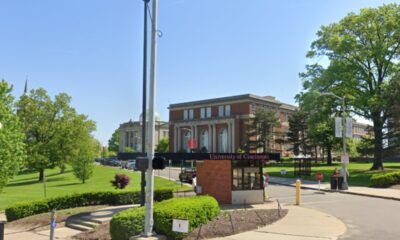Health
Researchers Transform Cancer Treatment by Rearranging Cell Structures

Scientists at the University of Cincinnati have introduced a groundbreaking approach to cancer treatment by focusing on the physical rearrangement of subcellular structures. Researchers, led by Jiajie Diao, Ph.D., have demonstrated that altering the location of lipid droplets within cancer cells can enhance the effectiveness of starvation as a treatment strategy. Their findings are featured in the November cover story of the journal Trends in Biotechnology.
Lipid droplets serve as storage units for fatty acids and play critical roles in cellular metabolism and signaling. During periods of nutrient deprivation, these droplets move towards the mitochondria to supply energy by transferring fatty acids. Diao likened lipid droplets to “emergency gas cans” that mobilize to fuel cells when energy is low. He emphasized the significance of this mechanism for cancer treatment, stating, “The way the cancer cells or tumors will be targeted for treatment is to try to starve the cell to kill it.” Unfortunately, cancer cells utilize lipid droplets to maintain their energy levels, complicating starvation approaches.
To tackle this challenge, Diao and his team engineered a method to cluster lipid droplets together, preventing their movement towards mitochondria during starvation. This innovative strategy involved the use of a specific protein sequence, which includes a peptide linked to lipid droplets and another that activates under blue light. Diao explained, “When activated by light, the peptides will eventually bring all the lipid (droplets) together and lock them up. It’s like a light-active glue, and they form a big chunk inside the cell.”
This technique effectively halts the energy supply to cancer cells, leading to more significant cell starvation. The researchers observed a noticeable slowdown in tumor progression in both cell lines and animal models, confirming the potential of this method.
Although blue light activation is not viable for patient treatment due to skin barriers, Diao is collaborating with experts in UC’s Department of Chemistry to develop a drug that could similarly cluster lipid droplets. This drug could be administered orally or injected directly into tumors, providing a practical solution for cancer patients.
Diao highlighted the broader implications of their research, stating, “It actually opens a completely new avenue for cancer treatment. That’s the unique part of this. It’s the first method to treat cancer through subcellular physical distribution.” This pioneering research not only presents a novel strategy for cancer therapy but also sets the stage for further exploration into how physical alterations within cells can lead to innovative treatment options.
The full study, titled “Optogenetic engineering of lipid droplet spatial organization for tumor suppression,” is available in the November 2025 issue of Trends in Biotechnology. This research marks a significant step forward in the ongoing battle against cancer, with the potential to improve outcomes for patients facing this challenging disease.
-

 Technology5 months ago
Technology5 months agoDiscover the Top 10 Calorie Counting Apps of 2025
-

 Technology3 weeks ago
Technology3 weeks agoOpenAI to Implement Age Verification for ChatGPT by December 2025
-

 Health3 months ago
Health3 months agoBella Hadid Shares Health Update After Treatment for Lyme Disease
-

 Health3 months ago
Health3 months agoAnalysts Project Stronger Growth for Apple’s iPhone 17 Lineup
-

 Health4 months ago
Health4 months agoErin Bates Shares Recovery Update Following Sepsis Complications
-

 Technology5 months ago
Technology5 months agoDiscover How to Reverse Image Search Using ChatGPT Effortlessly
-

 Technology3 months ago
Technology3 months agoElectric Moto Influencer Surronster Arrested in Tijuana
-

 Technology5 months ago
Technology5 months agoMeta Initiates $60B AI Data Center Expansion, Starting in Ohio
-

 Technology2 months ago
Technology2 months agoDiscover 2025’s Top GPUs for Exceptional 4K Gaming Performance
-

 Technology5 months ago
Technology5 months agoRecovering a Suspended TikTok Account: A Step-by-Step Guide
-

 Health5 months ago
Health5 months agoTested: Rab Firewall Mountain Jacket Survives Harsh Conditions
-

 Lifestyle5 months ago
Lifestyle5 months agoBelton Family Reunites After Daughter Survives Hill Country Floods





















